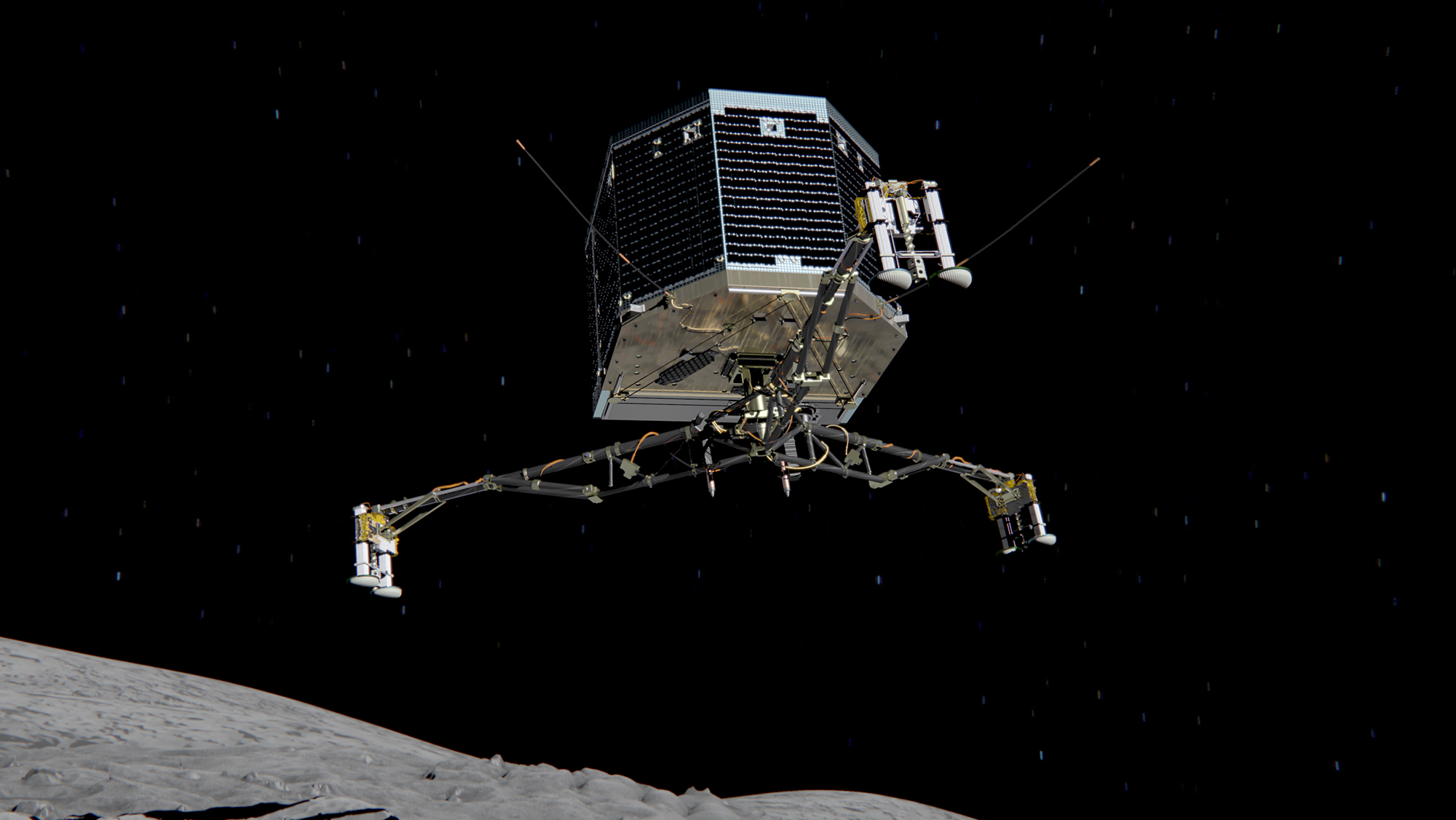
Posted on 11/12/2014 2:32:04 PM PST by BenLurkin
A European robot probe has made the first, historic landing on a comet, but its status remains uncertain after harpoons failed to anchor it to the surface.
Officials said the craft may have lifted off the comet after touchdown before returning to the surface.
Lander project manager Stephan Ulamec said: "Maybe we didn't just land once, we landed twice."
Further analysis is needed to fully understand the situation.
However, Dr Ulamec told the BBC that at last radio contact with the probe that he believed it to be in a stable configuration.
"This is the indication right now," he explained. "We really have to wait until tomorrow morning and then we will know a lot more."
The "first" landing on Comet 67P/Churyumov-Gerasimenko was confirmed at about 1605 GMT.
There were cheers and hugs at the European Space Agency's mission control in Darmstadt, Germany, after the signal came through.
Early data started to come back from instruments, and one team could see that the lander, known as Philae, had sunk about 4cm (1.5 inches) into the surface, suggesting a relatively soft top layer.
But shortly after, engineers could see that the harpoons, designed to fasten the spacecraft to the 4km-wide (2.5 miles) ball of ice and dust, had not fired as planned..
(Excerpt) Read more at bbc.com ...
A Japanese sample/return mission had that “bounce” problem, too.
If the thrusters aren’t working, what would cause a “bounce”? I thought it was a given that if the harpoons didn’t work and the craft didn’t stick the landing, the only way to stay on the surface was those thrusters, given the weakness of the gravitational field.

The Great White Comet.
From what I’ve heard about that craft, it has no thrusters. No way of steering. It gets moved into position by its “mother ship” then dropped onto the surface. Nothing holding it on right now except for sheer luck.
/johnny
From what I’ve heard about that craft, it has no thrusters. No way of steering.
...
I read it had a thruster to help with the landing, but it failed. The harpoons failed, too.
Sounds like its sitting there and will probably be fine as long as nothing disturbs it.
Any landing you can float away from is a good one.
Not directional thrusters, but one to hold it down while the ice screws establish a firm grip.
Critical to mission success is the lander's ability to hold onto the rock, dust and ice at landing. As there was a real risk of the lander bouncing off the comet, harpoons, landing leg ice screws and thrusters needed to work in concert to ensure Philae stayed in place. Apart from the harpoon system failing, another component of the landing system did not operate -- the cold gas thrusters. These thrusters were designed to push the lander into the cometary surface on landing.Rosetta's Lander Grabs Onto Comet and Lands : Discovery News
Yep, nothing like stating the obvious: “The lander has to survive all of the bounces for the landing to be a success.”
Does the EU not know about duct tape?
That still leaves my question unanswered: why would it bounce (as opposed to deflect off into space)? The harpoon and the thrusters were the only systems that seemed to allow the robot to return to the surface after impact, should the robot fail to immediately anchor itself in, and neither are working. The screws would help the craft stick the landing, but wouldn’t seem to be of any help if it bounced.
I'd bet it gets thrown off from a change in the comet's rotational axis from the loss of mass.
Assuming the anchors never imbed.
I wonder if a low power ion thruster would have been feasible to hold the craft down?
The comet has some gravity. The lander bounced because the grappling and thruster malfunction, while it landed on shock absorbers.
Disclaimer: Opinions posted on Free Republic are those of the individual posters and do not necessarily represent the opinion of Free Republic or its management. All materials posted herein are protected by copyright law and the exemption for fair use of copyrighted works.